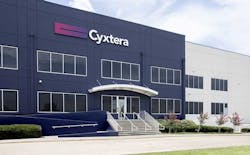Why Does Colo Matter in the Era of Cloud-First?
In this edition of Voices of the Industry, Randy Rowland, President of Data Center Services at Cyxtera, explores how colocation can play an even more important role as an alternative to on-premises environments.
Randy Rowland, President of Data Center Services at Cyxtera
By 2025, 80% of enterprises will have shut down their traditional data center, versus 10% today. This is seen in the shift many organizations are making to “cloud-first” IT strategies. But IT leaders must continually determine what is the right workload destination to maximize IT agility and drive business impact.
Over the course of the past several years, SaaS and cloud initiatives have often been the de facto option to support digital innovation and new workloads or to migrate mission-critical applications. Yet, as I discussed in my first article of this series, not every workload is destined for cloud. The security, compliance and latency requirements of legacy systems and many critical workloads stymy migration efforts. This is compounded by the realization that supporting steady-state workloads in the cloud isn’t nearly as cost-effective as once thought. It’s time for organizations to re-evaluate their off-premises platform options.
Making the Case for Colo
The reasons organizations have traditionally chosen colocation – what I refer to as “The 3 C’s” – still hold true today:
- Cost
Enterprise data centers are cost-prohibitive. This is based not just on the initial large capital outlay involved, but also in the ongoing costs to staff, operate and maintain these complex environments. Colocation offers economies of scale and predictable cost models on-premise data centers can’t match without the 10 year+ leases and depreciating data center infrastructure.
- Compliance
Enterprises operating their own data centers must maintaining compliance with ever-changing regulations that govern everything from data security, to safety to energy efficiency. Colocation providers assume much of the compliance burden, and offer improved uptime and availability, freeing enterprises to focus on their core business operations.
- Control
Colocation gives enterprises the control and autonomy of dedicated infrastructure previously only available in their own data centers. This is critical for organizations’ that need to support mission critical applications and protect sensitive data. In addition, colocation’s better access to network bandwidth and a diverse service provider ecosystem gives enterprises a broad range of options to meet changing business needs.
What’s needed is for colocation to be provisioned and consumed like the cloud, on demand through APIs and a web console.
Maximizing the value of colocation lies in choosing optimal workloads to migrate. Gartner advises that workloads with “short-term capacity increase requirements for the data center” are a prime example. By moving these to colocation, organizations can:
- Provide quick capacity with flexible terms.
- Free up power and cooling in current data center.
- Move network infrastructure to cloud exchanges provided by the colocation provider to bring cloud providers into the WAN.
The Colo Catch 22
With all these transformative advantages, what has gated colocation adoption as an alternative to on-premise or cloud? As with any IT solution, colocation does not come without its challenges. I covered some, namely connectivity and capacity planning, in my second article of this series. Historically, businesses had two options: either under provision colocation capacity and power then scramble to find non-contiguous space to address peaks in demand; or over provision and pay too much for capacity that’s not needed. This, along with the average 3-6 months to stand up new colocation environments, have hindered organizations’ ability to colocation’s advantages.
Colocation should play a more strategic role as we transition from data centers—yet in its existing deployment model, it’s limited.
What’s needed is for colocation to be provisioned and consumed like the cloud, on demand through APIs and a web console. Colocation providers can achieve this by making connectivity and dedicated, pre-configured hyperconverged infrastructure available via a software-powered architecture.
On-Demand Colo in Action
Let’s take a closer look at how on-demand colocation could address the short-term capacity requirements cited above. Dev / test labs are just one of many examples. Organizations can quickly and cost-effectively provision a secure, dedicated environment on which to test new releases of applications before deploying into production. The use of on-demand, hypervisor agnostic HCI nodes makes it easy to reimage and test for different operating requirements. Colocation’s secret weapon—serving as an interconnectivity hub – enables easy access to multiple cloud exchanges and other service providers in a metro campus for a truly hybrid environment.
On-demand data center innovations have brought renewed relevance to colocation as a strategic powerhouse in an increasingly hybrid IT world. Keep an eye on the providers prioritizing on-demand colocation consumption models to maintain data center control with the speed and flexibility of the cloud.
Randy Rowland is President of Data Center Services at Cyxtera. Connect with Randy on LinkedIn.


